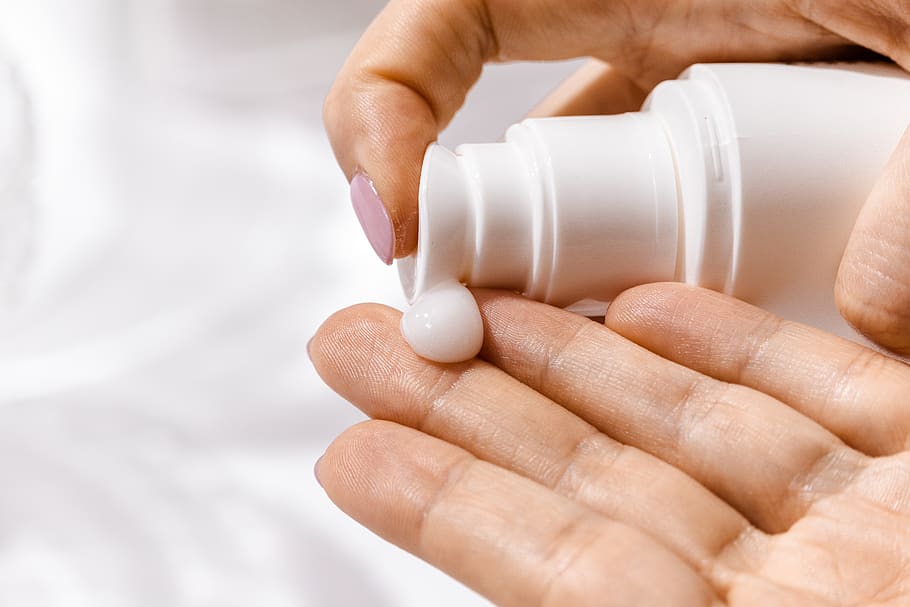Tretinoin is all over the internet lately, and between myths and facts, people are lost and do not know whether they should give it a try or stay away from this new famous skincare product. There is a lot of research concerning the appropriate use of Tretinoin and the results are always beneficial. We will get you through a full guide so that you can obtain the best result from the product.

What Is Tretinoin?
Tretinoin is a lab-prepared retinoid (contains vitamin A) topical cream used to treat acne, get rid of wrinkles, and reverse sun damage. There are different types of retinoids, such as retinol, Tretinoin and adapalene. Tretinoin is the most powerful retinoid, and it allows users to attain their desired results faster. With consistent application, users may get visible results within four to six weeks.
How Does Tretinoin Works?
Tretinoin speeds up cell turnover, thus stimulating collagen production. This allows for different skin improvements such as erasing fine lines and wrinkles, helping with pigmentation, shrinking pore size, evening skin tone and getting rid of acne.
Side-Effects Of Tretinoin…
Tretinoin has a lot of side effects, which is completely normal. When your skin starts reacting to the products, there are some unwelcome stages that you will have to go through in order to achieve the perfect result. Keep in mind that not all side effects are there to prove the efficacy of the product, so we will go through the normal effects of tretinoin and side effects that will require medical attention.
Common Side Effects:
Skin peeling, redness and dryness occur because Tretinoin helps to speed up the rate at which your body sheds old skin cells through a process known as “cell turnover.” When new skin cells are formed, the old ones will be shed. This can give your facial skin a flaky, dry and crusty appearance for the first few weeks or months of use, but it will get better in time.
You may notice bearable stinging and burning where you applied the product. This is normal and usually does not require medical care, but if it comes to the point where the side effects become unbearable, you should see an expert.
Note that the side effects only last the first two months and should lessen afterward.
Purging
Have you ever heard of skin purging? It is a condition when you incorporate a new active ingredient into your routine. One simple way to explain purging is the process when your skin is moving all of your skin’s junk to the top.
During this stage, many people tend to stop the use of the product, you may feel that your skin is getting worse, but it is only the bad stage before it becomes glowing.
You should witness purging during the first four to six weeks of using the product and it will not last longer than six weeks.
How To Apply Tretinoin?

You should apply your product before bed as you won’t be exposed to the sun. Take a pea-sized drop of cream and apply it to the specific areas that need improvement. I cannot stress this enough, use only a pea-size; many people think that using more will help with faster results, but all it will do is cause more irritation.
Products That You May Use Along With Tretinoin:
When I apply my Tretinoin at night, I use a moisturizer before or after, or both. Wait for a minimum of 15 minutes between Tretinoin and your other products. Using a moisturizer will help reduce the dryness. You want to use a moisturizer that won’t counter the effect of your Tretinoin, or that does not have active ingredients as it may result in skin burn.
I’ll suggest you use the CeraVe moisturizing cream, the La Roche-Posay Cicaplast Baume B5 Multi-Purpose Balm, or E45 cream. These are heavier creams. You can use it only at night or in the morning, and it depends on your skin type.
At night, I’ll suggest you keep your routine very simple:
Morning Routine:
- Cleansers
- Vitamin C Serum
- Hyaluronic Acid
- Moisturizer
- SPF
Night Routine:
- Cleansers
- Moisturizer
- Treatment
Vitamin C will brighten your skin and even your skin tone. Additionally, as you are using Tretinoin, you will need extra sun care, and vitamin C will protect you from radicals produced by UV exposure.
If you follow the night routine, this means that you are not using any products that may cause more irritation or cancel the other products’ functions. Avoid using a cleanser containing salicylic acid.
I hope that this article has helped to choose if you should or not start Tretinoin. Let us know in the comments what are your views on this product…


